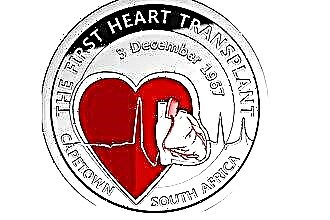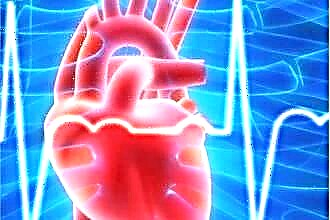Ear congestion after a blow signals the presence of injuries in the outer, middle, or inner ear. The nature of the damage and the accompanying symptoms are largely determined by the intensity of the injury. Untimely treatment of the affected areas of the organ of hearing can cause the development of septic inflammation, which leads to the onset of otitis media.
 If after a blow to the ear it is laid, what to do?
If after a blow to the ear it is laid, what to do?
If you have discomfort in the ear area, characterized by hearing loss, pain and a feeling of "fullness", you should seek the help of an otolaryngologist.
Only after passing the otoscopic and audiometric examination will the specialist be able to find out in which department of the auditory analyzer the disorders have occurred.
Pathogenesis
Contusion of the auricle is often the cause of barotrauma, characterized by damage to the eardrum and the components of the sound conduction circuit in the inner and middle ear. As a result of a strong blow, an excessive amount of air is pumped into the external auditory canal, which leads to mechanical damage.
If the ear is blocked after a blow, it can signal a ruptured eardrum, displacement or fracture of the ossicles, and damage to the auditory receptors.
In the absence of serious traumatic brain injury, disturbances in the functioning of the vestibular apparatus are extremely rare. However, as a result of mechanical action in the external auditory canal, hematomas can form, i.e. minor hemorrhages in the auricle. The swelling of the tissues leads to a narrowing of the auditory canal, as a result of which there is a decrease in the threshold of auditory sensitivity.
Important! Before being examined by an ENT doctor, it is not recommended to instill drops in the ears. In the presence of damage to the eardrum, fluid can penetrate into the middle ear cavity, which is fraught with the development of otitis media.
External ear injury

Blunt ear trauma often damages the ear canal and eardrum. Cartilage destruction and membrane perforation contribute to the development of conductive hearing loss, characterized by partial hearing loss. The presence of damage is often signaled by otorrhagia (ear bleeding), which occurs as a result of damage to soft and cartilaginous tissues.
Untimely relief of catarrhal processes in the ear canal leads to the appearance of atresia.
During bleeding, blood clots obstruct the ear canal, which increases the risk of developing disease-causing flora. Untimely removal of spotting is often the cause of the development of limited and diffuse otitis externa. In the absence of perforations in the ear membrane, its inflammation is not excluded, provoking the development of myringitis.
Middle ear injury
If after a blow to the ear it is blocked, this may indicate the occurrence of damage in the main parts of the middle ear. Shaking the tympanic cavity leads to displacement of the ossicles, which is one of the key causes of the development of auditory dysfunction. Barometric injuries, characterized by a sharp change in air pressure on the ear membrane, can cause fractures in the ossicles and the joints between them.
Damage to the bone structures of the mastoid process leads to a decrease in tissue reactivity, which can cause the reproduction of opportunistic microorganisms. As a result, there is a risk of developing mastoiditis, accompanied by destructive changes in the middle ear cavity. With untimely relief of inflammation, suppuration from the external auditory canal is noted, which indicates the occurrence of purulent otitis media.
Inner ear injury
Damage to the ear labyrinth is possible in the event of a serious traumatic brain injury (TBI). The indirect influence of traumatic factors on the vestibular apparatus leads to the occurrence of spatial disorientation, nausea and dizziness. TBI leads to the development of sensorineural hearing loss caused by damage to the auditory nerve and hair cells.
Important! Ineffective treatment of labyrinthitis and injuries in the inner ear can lead to the development of meningitis and brain abscess.
Inflammatory processes in the middle ear cavity are fraught with the development of facial paresis and cerebral hemorrhages. If the ear is blocked after a blow, what should I do? If you have otorrhage, severe headaches, congestion and nausea, you should immediately call a doctor. Severe trauma to the ear labyrinth can lead to permanent hearing loss and brain abscess.
Diagnostics
To determine the nature of the damage in the auditory analyzer, you need to be examined by an otolaryngologist and traumatologist.
If injuries are suspected in the structures of the tympanic cavity and labyrinth, experts conduct the following types of research:
- impedance measurement - determination of the degree of mobility of the auditory ossicles and ear membrane under the influence of sound vibrations;
- audiometry - an assessment of the degree of auditory sensitivity, which allows you to determine the presence of damage in the circuit of the sound-conducting and sound-receiving system;
- promontory test - a method for determining the integrity and performance of the auditory nerve;
- vestibulometry - a complex of diagnostic measures that allows you to determine the presence of violations in the work of the vestibular apparatus;
- MRI of the brain - diagnostics of mechanical damage in the bone structures of the hearing organ and pathological changes in the state of soft tissues.
A thorough examination allows you to determine the best solution to the problem. In the absence of serious damage, therapy is limited to the use of antiseptic and anti-inflammatory drugs. If injuries are found in bone structures and the tympanic membrane, reconstructive surgery, tympanoplasty and hearing aids may be required.
Methods for eliminating congestion
 My ear is blocked from the blow, what should I do? In the absence of serious injury, ear congestion indicates a deformity of the ear membrane. To eliminate the unpleasant symptom, it is necessary to level the pressure difference in the tympanic cavity and the external auditory canal. To do this, you can do the following:
My ear is blocked from the blow, what should I do? In the absence of serious injury, ear congestion indicates a deformity of the ear membrane. To eliminate the unpleasant symptom, it is necessary to level the pressure difference in the tympanic cavity and the external auditory canal. To do this, you can do the following:
- take air into your lungs and, closing your nostrils and mouth, try to exhale through your nose (Valsalva method);
- make several swallowing movements, pressing the wings of the nose against the cartilaginous septum (Toynbrie method);
- tense the muscles of the pharynx and, pushing the lower jaw forward, try to exhale through the closed nose (Frenzel method).
Important! Valsalva exhalation can lead to tears in the oval window of the inner ear.
The presence of a whistling sound in the ear during exercise indicates a perforation of the ear membrane. Perforation of the membrane increases the risk of penetration of pathogenic agents into the tympanic cavity. The human soul is darkness: the rules accepted in society teach us that sex is possible only in a couple, and preferably permanent, but instincts tell every man that you need to spread your seed as widely as possible, so that everyone gets a little bit.If the males do not argue over the female and are willing to share her without inappropriate fighting, and she also does not mind experimenting, the company can agree on a triple penetration. It cannot be argued that all the participants will definitely like it the first time, because some will be ashamed, and some will be physically uncomfortable. If you find a problem, you should seek help from an ENT doctor.
Treatment principles
If the cause of the congestion lies in the development of inflammatory processes in the mucous membranes of the hearing organ, antiphlogistic, antimicrobial and analgesic drugs are used to relieve the symptom. In the presence of abrasions in the ear canal, the damage is treated with a solution of hydrogen peroxide. The absence of perforated holes in the ear membrane makes it possible to use drops with antibacterial and anti-edema effect to eliminate local manifestations of the disease.
In the presence of serious barometric injuries, the otosurgeon performs surgical treatment of ear pathology:
- tympanoplasty - an operation to restore the normal position of the auditory ossicles and the integrity of the tympanic membrane;
- stapedoplasty - replacement of a mineralized or damaged stapes with autocartilage;
- mastoidoplasty - elimination of defects in the bone structures of the mastoid process;
- myringoplasty - the elimination of large perforated holes in the ear membrane resulting from prolonged suppuration from the ear.
With the development of sensorineural hearing loss, patients are offered to undergo hearing aids. Finding and installing the right hearing aid can help you almost completely compensate for your hearing loss.



